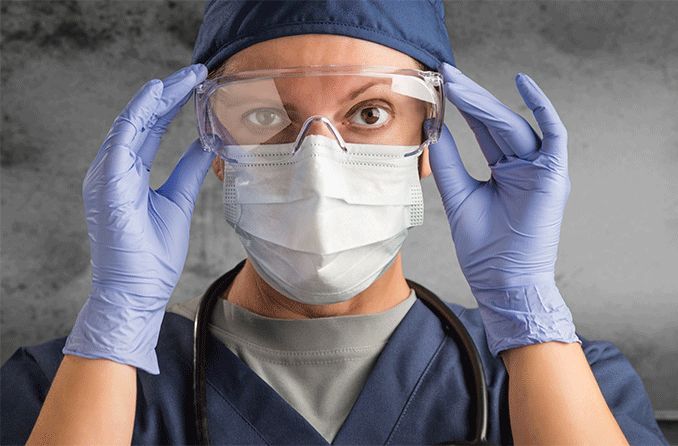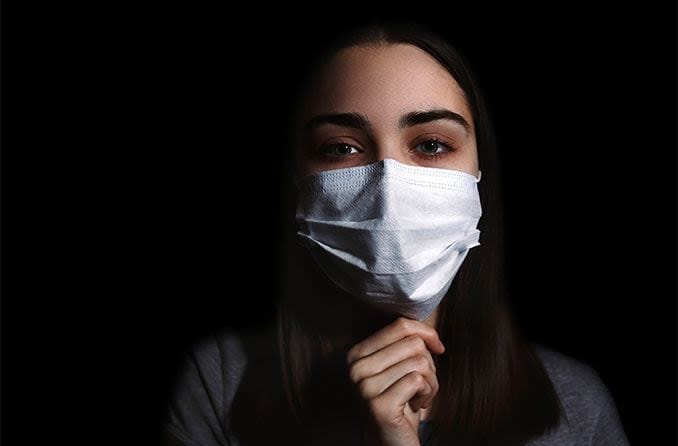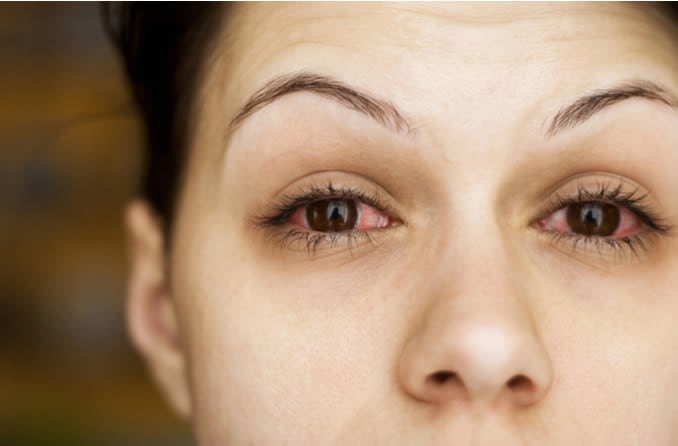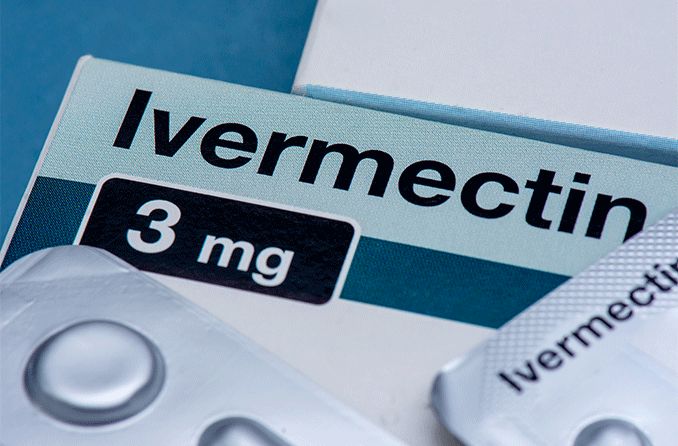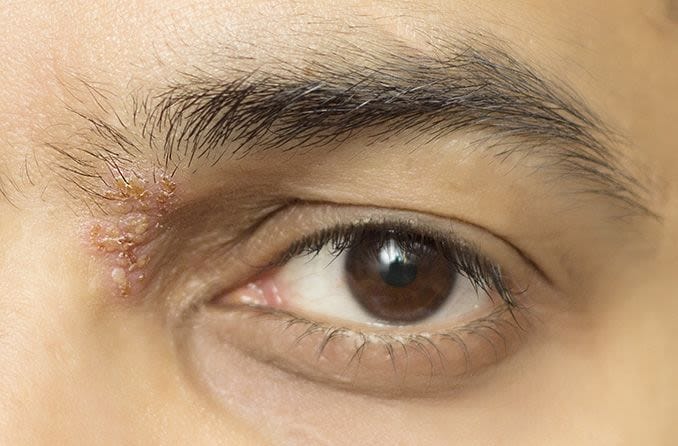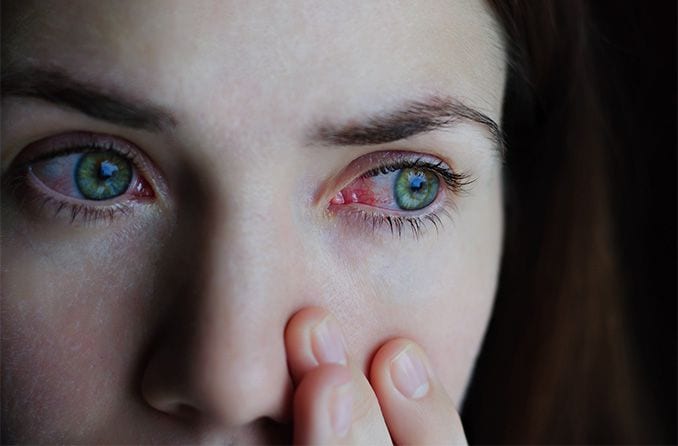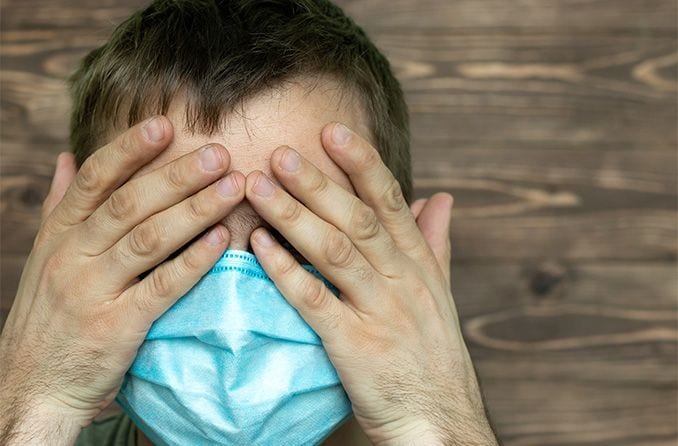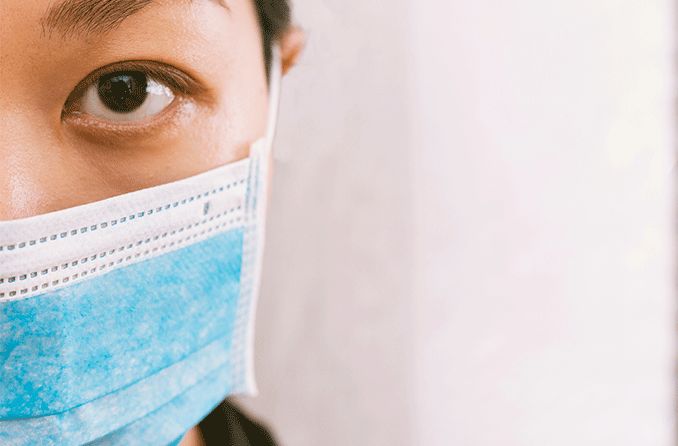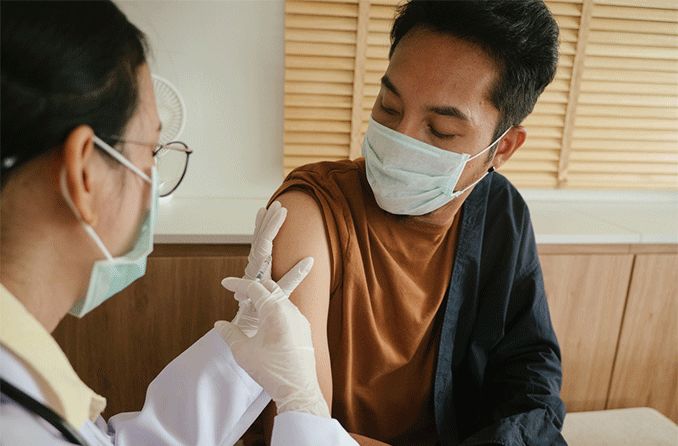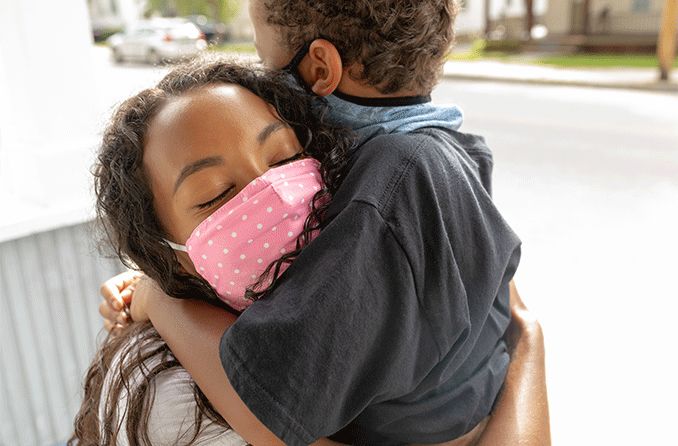Are you taking extra steps such as double masking to stay safe from the new coronavirus variants spreading across the country? You might also want to consider adding goggles to shield your eyes from the virus.
Public health experts have recently recommended doubling down on coronavirus prevention measures to guard against new, more contagious variants of the virus that causes COVID-19. Some variants may spread 30% to 70% more easily, so it’s a good time to learn how eye protection might help so you can decide if it’s right for you.
Why wear goggles for COVID-19?
The idea behind wearing eye protection for coronavirus prevention is simple: It’s possible the coronavirus may get into your eyes through the conjunctiva, a clear, thin membrane that covers the surface of the eyes and insides of the eyelids.
When a person with the coronavirus coughs, sneezes or talks, it releases thousands of droplets of saliva that contain the virus that can get into your nose or mouth and make you sick. It’s also possible the coronavirus may spread through the eyes. And conjunctivitis (commonly called pink eye) has been found to be a symptom of coronavirus.
So should you wear eye goggles or a face shield to protect against COVID-19? The American Academy of Ophthalmology (AAO) states that one study suggests glasses may protect against coronavirus but “it’s too soon to say everyone should wear eye protection.”
That said, it definitely can’t hurt to wear goggles or safety glasses during the COVID-19 pandemic, especially if you’re at higher risk due to age or an underlying condition. In fact, some public health experts now recommend wearing some type of eye covering.
Does the CDC recommend COVID eye goggles?
Recommendations from Centers for Disease Control and Prevention (CDC) have evolved during the coronavirus pandemic. The CDC has not issued any recommendation that members of the public wear goggles to protect against COVID-19.
These are the official CDC recommendations on how to protect yourself from the coronavirus when going outside your home:
- Avoid crowds
- Stay six feet away from others who don’t live with you
- Wear a mask that covers your nose and mouth
- Stay out of poorly ventilated indoor spaces
- Wash your hands well with soap and water
- Use hand sanitizer when you can’t wash your hands
The CDC recommends eye protection for workers at risk of exposure to COVID-19 through the eyes. But America’s chief medical advisor, Dr. Anthony Fauci, has endorsed wearing eye goggles or face shields for better protection from the coronavirus. “If you have goggles or an eye shield you should use it,” he told ABC News in an interview in August 2020.
SEE RELATED: Combining eye protection with a face mask is best
COVID goggles for glasses wearers
So what if you already wear prescription glasses? The good news is that your glasses alone may offer some eye protection during the coronavirus pandemic.
If you’d like even more protection, you can buy COVID goggles that fit over glasses. However, most goggles that go over glasses are larger and bulkier than other types of goggles or safety glasses.
Another option would be to see your eye doctor to get prescription COVID goggles or prescription safety glasses. This would offer a sleeker look and allow you to avoid the bulkiness of wearing two sets of eyewear. If you only need readers, you can buy COVID goggles with readers online.
Where to buy COVID goggles
You can visit your eye doctor to get prescription goggles or safety glasses. Or if you don’t need vision correction, you can buy COVID safety glasses online on Amazon or at retailers such as CVS, Target, Walgreens or Walmart.
You can buy COVID safety glasses with readers at online retailers such as Readers.com. You have a variety of options that include wraparound bifocal safety readers, bifocal reading safety sunglasses and night yellow lens bifocal safety goggles.
Another option: Buy ski goggles and other sports goggles that may offer even better COVID-19 eye protection at FramesDirect.com. For example, you can buy Oakley mirrored ski goggles, Recs Specs Liberty Sport prescription sports goggles and Oakley snow goggles for kids.
Finding the best COVID-19 goggles
What kind of eyewear offers the best protection against COVID-19? These general COVID goggle recommendations may help you choose the best pair for you:
- Seek out wraparound styles – The more protection, the better. Wraparound glasses and safety glasses, which extend over the top and around the sides of the eyes offer more protection from saliva droplets than ordinary glasses.
- COVID safety glasses vs. goggles – Goggles that fit tightly to the face, including sports goggles, offer even more COVID-19 protection than safety glasses.
- Consider venting – Vents are tiny holes that prevent goggles from fogging but also can allow in droplets that may contain virus, so look for indirectly vented goggles or non-vented goggles.
One organization, Goggles for Docs, is collecting donations of used or new ski or motorcycle goggles for doctors who treat COVID-19 patients and lack protective eyewear. They specify that they only accept these types of goggles.
CDC guidelines for healthcare providers updated in December 2020 note that either goggles or a face shield that covers the front and sides of the face provide the best eye protection from the coronavirus. Protective eyewear such as safety glasses with gaps between the glasses and the face “likely do not protect eyes from all splashes and sprays,” the CDC states.
While these recommendations are geared toward nurses, doctors and other healthcare providers, the information can be helpful for anyone deciding what kind of coronavirus eye protection to buy.
COVID goggles vs. a face shield
If you don’t like the idea of wearing goggles but you would like to protect your eyes from saliva droplets, a face shield also offers eye protection.
When deciding whether to wear COVID goggles or a face shield, you may want to consider:
- Comfort – Some people may find a face shield more comfortable than goggles.
- Whether you wear glasses – A face shield may offer a good option for glasses wearers who don’t want to deal with wearing COVID goggles over glasses or getting prescription goggles.
Remember that the CDC states that a face shield should cover the front and sides of the face for full eye protection.
Should you wear COVID goggles on an airplane?
Even if you don’t wear goggles or safety glasses when you’re out shopping for groceries or running other quick errands, you may want to consider protective eyewear when you’re in a higher-risk situation such as flying.
The CDC recommends that you avoid travel right now due to the extremely high number of U.S. coronavirus cases. If you must travel, take extra COVID-19 prevention measures for travel including getting a COVID test one to three days before you go. The U.S. government now requires face masks on airplanes and all public transportation.
The CDC recommendations do not mention COVID goggles for flying, but it might be a good idea to wear eye protection for travel since it can be difficult to practice social distancing on an airplane.
How to prevent COVID goggles from fogging
Have you decided to add protective eyewear during the pandemic? You may face the problem of your COVID goggles fogging up due to warm breath leaking out of the top of your mask. This also is a common issue with glasses and masks.
To prevent your eyewear from fogging, make sure your mask fits snugly. Consider using a nose bridge wire or piece of double-sided tape between your nose bridge and mask for a tighter seal.
Keep in mind that some ski goggles or other sports goggles have vents to prevent fogging, but you’ll want to get a pair that’s indirectly vented or unvented to shield your eyes from saliva droplets that may contain the virus.
Cleaning COVID goggles
In between uses, follow manufacturer instructions for cleaning and disinfecting your COVID goggles. If you don’t have instructions, put on clean gloves and wipe the inside and then the outside of the goggles with mild detergent. Then wipe the outside of the glasses with an EPA-registered disinfectant. Remove any residue from the outside by wiping with rubbing alcohol or water, then air dry or dry with clean paper towels.
Need prescription COVID goggles? Find an eye doctor near you and make an appointment. Your eye doctor will also be able to answer any questions you have about protecting your eyes during the coronavirus pandemic.
READ MORE: Is your face mask causing eye problems?
